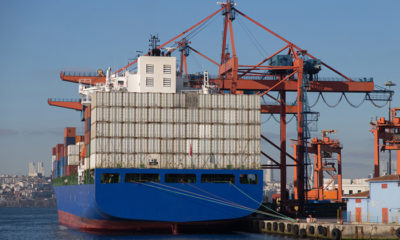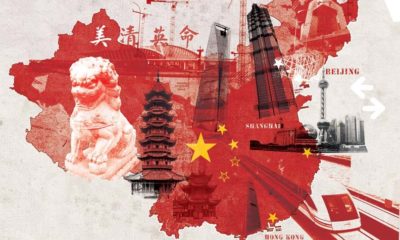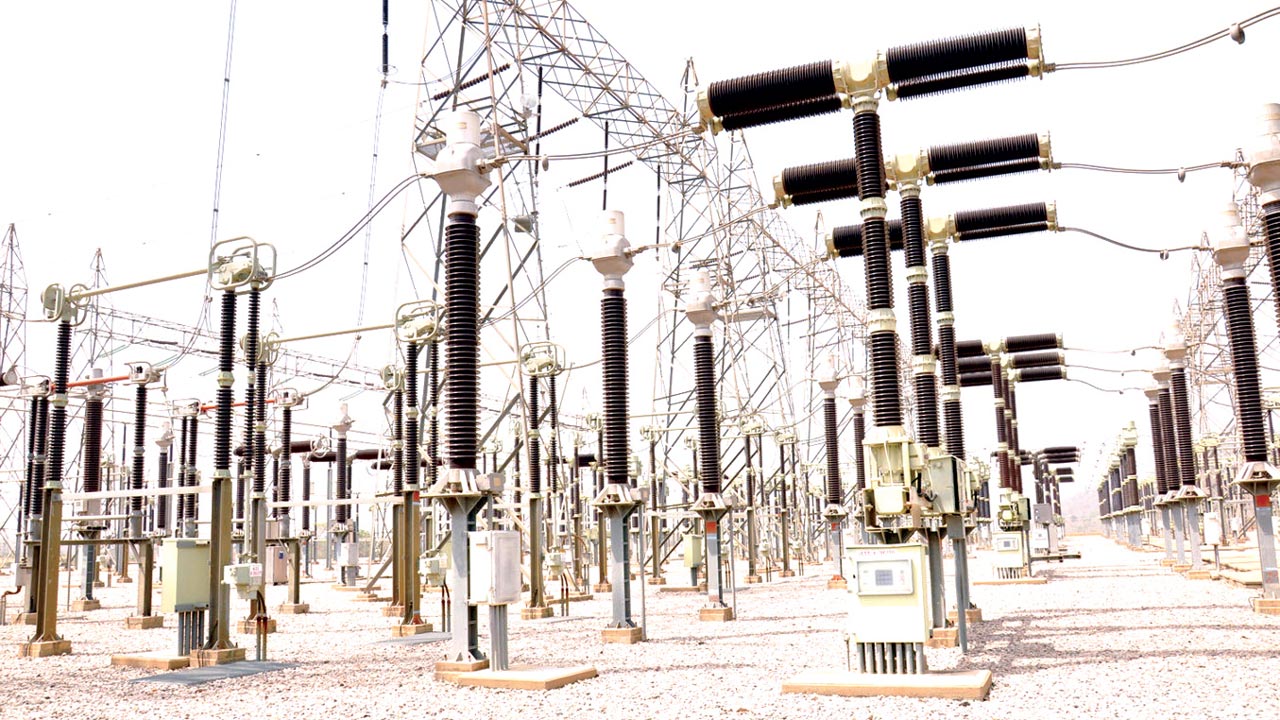With most of Europe, as well as Hong Kong, Australia, and New Zealand on holiday today, the focus of the day has been on this morning’s tier-1 data releases from China. China GDP YoY for Q1 beat expectations, rising by 4.80% (4.50% exp), and rising 1.30% QoQ (0.60% exp).
Industrial Production in March fell to 5.0% YoY from 7.50% in February while Retail Sales had a big miss, slumping to -3.50% YoY (-1.60% exp.) in March from 6.70% in February. Meanwhile, Unemployment in March rose to 5.80% from 5.50% previously, and Capacity Utilisation fell to 75.80% from 77.40% previously.
Overall, the data suggest that China started the year well, but as the quarter has moved on the headwinds have gotten stronger. A slowing property market, sweeping Covid restrictions, the Ukraine invasion pushing up base commodity and energy prices, and a central bank still intent on deleveraging sectors of the economy, have all combined to weigh on China’s growth. About the only thing missing is a meaningful rise in inflation, which is some small sliver of comfort.
It is little surprise, therefore, that mainland equities are heading south today once again, despite China’s PBOC cutting the RRR by 0.25% on Friday, allowing banks to lend more, with agricultural banks’ RRR being trimmed by 0.50%. Markets were disappointed that the 1-year MTF was not also cut on Friday and China’s have your cake and eat it approach seems to be facing more challenges by the day. China will have a second bite of the cherry on Wednesday, when it announces its latest 1 and 5-year Loan Prime Rate decisions.
Virus restrictions across China appear to be heading the wrong way, even as Hong Kong cases plummet. Markets are already seeing the impact on production and trade from the Shanghai lockdowns, and if these start spreading, the picture for China dims considerably, even without the downstream impact from the Russian invasion of Ukraine. China’s official 5.50% GDP target becomes more challenging by the day as consumer sentiment plummets, production costs rise and Covid policies threaten to wreak havoc with production and logistics. Eventually, this will weigh on other Asian markets as well.
Singapore’s Non-Oil Exports (NODX) fell to 7.70% YoY in March and fell by 2.30%, MoM. Admittedly, it is a volatile data series, but the growth of both electronic and non-electronic exports slowed. Not all of this can be attributed to China of course, but the timing is unfortunate ad the MAS has just tightened monetary policy aggressively. The Malaysia and Indonesia trade balances later today will make interesting reading, especially if exports to China ease.
With US and European markets closed on Friday, making Thursday the technical end of the week, we had a choppy session. Firstly, markets did not like a continuation by the ECB, of the glacial pace of a move towards tightening. One can hardly blame them given the events on Europe’s Eastern border, but markets punished the Euro, which has slumped to multi-decade support around 1.0800.
In the US, markets took fright at inflation and an impending 0.50% hike by the FOMC in early May. US yields shot higher, and equities slumped once again. Admittedly, part of the equity move could be related to investors reducing risk over the long weekend, an eminently sensible idea. However, US index futures on the big three have headed directly south this morning as well, along with Asian stock markets. Ominously, futures on US 10-year bonds have fallen heavily as well, indicating yields will open higher in the US this afternoon.
That has been great for the US Dollar, which rallied strongly on Thursday, and booked gains on Friday and today as well. Substantial falls by the Japanese Yen and the Euro have led the way, highlighting that the impact of interest rate differentials appears to be accelerating. Both the BOJ and ECB have signalled that interest rates are going nowhere in a hurry. One wonders when the same forces will start to materially impact the Yuan and low yield currencies around Asia.
The week is relatively light on the data front globally, certainly for heavyweight data prints. US Housing Starts tomorrow and Markit PMIs on Friday are the highlights. In Europe, we get Eurozone Industrial Production on Wednesday and Markit and Eurozone PMIs for the bloc on Friday. I would suggest all the European data has downside risk. In Asia, apart from trade balances and China’s LPRs, we see India release March WPIs for food, manufacturing, and inflation. Upside prints will increase the noise around the pace of the RBI’s move to a tightening bias and will probably be a headwind for the Sensex.
Japan releases Industrial Production tomorrow, and the trade balance on Wednesday, both of which have downside risks. It releases inflation on Friday, but I haven’t looked at that for 20 years and nor should you. We already know the answer. Apart from being another reason to be long USD/JPY, the main volatility this week from Japan will come from officials speaking about the Yen and “watching markets closely” as the Yen continues to be crushed by the US Dollar.
On the geopolitical front, the brave defenders of Mariupol have given the Russians a one-fingered salute regarding their kind offer to surrender, although they appear to be on their last legs and the city will not be Russia’s Stalingrad. Realistically, we are not likely to get another way of Ukraine risk aversion sweeping markets until Russia finishes reconstituting and resupplying its forces and commences its offensive in Eastern Ukraine.
Asia equity markets tumble on China/US fears.
Equity markets finished weaker in the US on Thursday as investors took risk of the table ahead of the long weekend, and Fed rate hike fears pushed US yields sharply higher, spiking equity prices. The S&P 500 fell 1.21%, the rate-sensitive Nasdaq tumbled by 2.14%, while the Dow Jones retreated by 0.32%, backstopped by form oil prices. The same fears are permeating US markets today as futures trading commenced in Asia. S&P 500 and Dow futures are 0.50% lower, while Nasdaq futures have fallen by 0.90%.
In Asia, the ever-increasing sweep of covid lockdowns in China, and mixed data from the mainland have combined with weak US price action to push Asian markets lower. Japan’s Nikkei 225 has tumbled by 1.50%, while South Korea’s Kospi has edged just 0.20% lower, helped by a weakening currency.
Mainland China is deep in the red, with the Shanghai Composite down 0.80%, with narrower Shanghai 50 retreating by 1.65%. The CSI 300 has fallen by 0.95%. Hong Kong markets are closed. Although markets are in the red in China, it would not surprise me at all if we saw a mysterious rally towards the close as China’s “national team” steps into “smooth” flows.
Around Asia, Singapore is down by 0.65%, Kuala Lumpur is 0.30% lower, while Jakarta bucks the trend, climbing 0.50%. Taipei has fallen by 0.65%, with Bangkok unchanged and Manila rising by 0.25%.
European, Australian and New Zealand markets are closed today. A stronger US Dollar, lower US bond futures and weakening China data won’t give the perpetual FOMO-bulls of Wall Street any reason to sing. We also face substantial downside risks from the underway US earnings season now. Not so much with Q1 results, but rather the 2022 outlooks by the index heavyweights. Netflix will be the first test of the market’s resolve if its numbers and outlook darken.
US Dollar soars on Fed tightening nervous, weak Euro.
The Euro and Yen have tumbled since Thursday, and US bond yields have noticeably firmed once again as Fed rate hike fears increase the closer, we get to May’s FOMC. That has combined to punish the dollar index substantially higher, rising 0.50% to 100.33 on Thursday. The dollar index rose slightly on Friday and has gained 0.20% to 100.70 in Asia today. Resistance at 100.90 is within sight, and a move through 101.00 would signal more gains targeting the 2020 pandemic-panic highs at 103.00. Support is between 99.40 and 99.55.
The ECB policy decision, where it signalled little to no intention of increasing the pace of tightening or removing QE earlier, saw EUR/USD sold heavily on Thursday. EUR/USD traded between 1.0750 and 1.0900 before finally finishing 0.60% lower at 1.0830. The single currency eased slightly on Friday before moving 0.20% lower to 1.0785 in Asia today. The Euro is now facing a serious test of the multi-decade support line at 1.0800. A daily close will increase bearish nerves, and a weekly close below it will be a powerful bearish signal. Initial targets are 1.0600 and 1.0300 and potentially a fall through 1.0000. Rallies in o 1.0950 should find plenty of sellers. Ukraine and energy fears and a dovish ECB make a sustainable rally in Euro challenging now. Only a sudden narrowing of the US/Core-Europe rate differential will likely change the outlook.
Sterling is holding above 1.3000 for now at 1.3030, as markets price in hikes by the BOE in May, and heavy EUR/GBP selling supports GBP/USD. Rallied have been limited to the 1.3150 regions, though, and the risk remains skewed towards a comprehensive failure of 1.3000, which should target 1.2700 initially. The Australian and New Zealand Dollars have both suffered heavy losses over the past few sessions, as risk aversion increases, and with both central banks perceived as being too slow to move on inflation. AUD/USD had fallen to 0.7360 and has support at 0.7300. NZD/USD has broken its uptrend line at 0.6815 last week, retreating to 0.6730 today. As risks of a hard landing increase, NZD/USD remains the more vulnerable. Failure of 0.6815 now could see NZD/USD fall all the way back to 0.6500 in the weeks ahead, with 0.50% priced into the next RBNZ meeting.
The widening US/Japan yield gap has seen USD/JPY soar over the past two sessions, reaching 126.65 this morning, taking out previous resistance at 125.80, which becomes initial support, followed by 125.00. Expect the official rhetoric from Tokyo to move up a notch this week now, although any dips are probably ones to buy. USD/JPY is now entirely at the mercy of the rate differential, and unless that reverses sharply, USD/JPY should target 128.00 eventually.
Asian currencies are weaker today, following the sharp move higher by US yields on Thursday, China’s economic nerves, and higher oil prices. USD/KRW has risen 0.45% to 1233.75 today, with USD/TWD climbing 0.35% and USD/JPY rising by 0.15%. Both USD/CNY and USD/CNH are also approaching one-year trendline resistance levels at 6.3770 and 6.3950 respectively. Daily closes above would signal another leg of Yuan weakness. As I have said ad nauseam previously, the slow pace of Asian monetary normalisation will present challenges to Asian FX as US rates keep moving higher. A slowing China will add to those concerns meaning we are likely to see Asia FX rates move lower over the coming quarter.
Libya nerves lift oil prices.
Oil prices are around 1.0% higher today in Asia as trading resumes after the Good Friday holiday. In thin trading, oil closed modestly higher on Thursday, and today, Brent crude has risen to $112.75 a barrel, and WTI to $108.00 a barrel. There are a few reasons behind today’s rise. OPEC reported that production rose only 57,000 bpd in March according to data, not even climbing by the agreed 253,000 bpd. The IEA said 3 million bpd of Russian production would be impacted by sanctions by May, and the Russian Interfax agency said Russian production slipped by 7.50% in the first half of March.
Finally, over the weekend, protestors appear to have shut down one small Libyan oil field, and completely disrupted loading at a major coastal terminal. Although only 75,000 bpd of actual production has been taken offline, with global supplies now so tight, even the most minor disruption is likely to have an outsized impact on prices.
With so much volatility in intraday oil prices, and extreme reactions to headline risks, technical levels have become rather irrelevant. Overall, therefore, I continue to expect that Brent will remain in a choppy $100.00 to $120.00 range, with WTI in a $95.00 to $115.00 range. Brent crude has further support at $96.00, and WTI at $93.00 a barrel.
Gold’s rally continues.
Gold booked a modest retreat on Thursday as US yields and the US Dollar climbed noticeably higher. Gold fell 0.22% to $1973.50 an ounce. In Asia today, gold has resumed its rally, despite the US Dollar also strengthening. Gold ahs risen by 0.54% to $1984.00 an ounce.
Gold’s price action, it must be acknowledged, remains constructive. It is managing to maintain gains on US Dollar strength, while also grinding higher even as US yields and the greenback both strengthen. Gold has initial resistance at $2000.00 an ounce, although I believe option-related selling there will be a strong initial barrier. If that is cleared, gold could gap higher to $2020.00 an ounce quite quickly and potentially, a retest of $2080.00 an ounce.
A retreat through $1960.00 and $1940.00 an ounce will signal a whipsaw move lower, chopping out the short-term money. Failure of $1915.00 will signal a retest of important support at $1880.00 and possibly $1800.00 an ounce

































